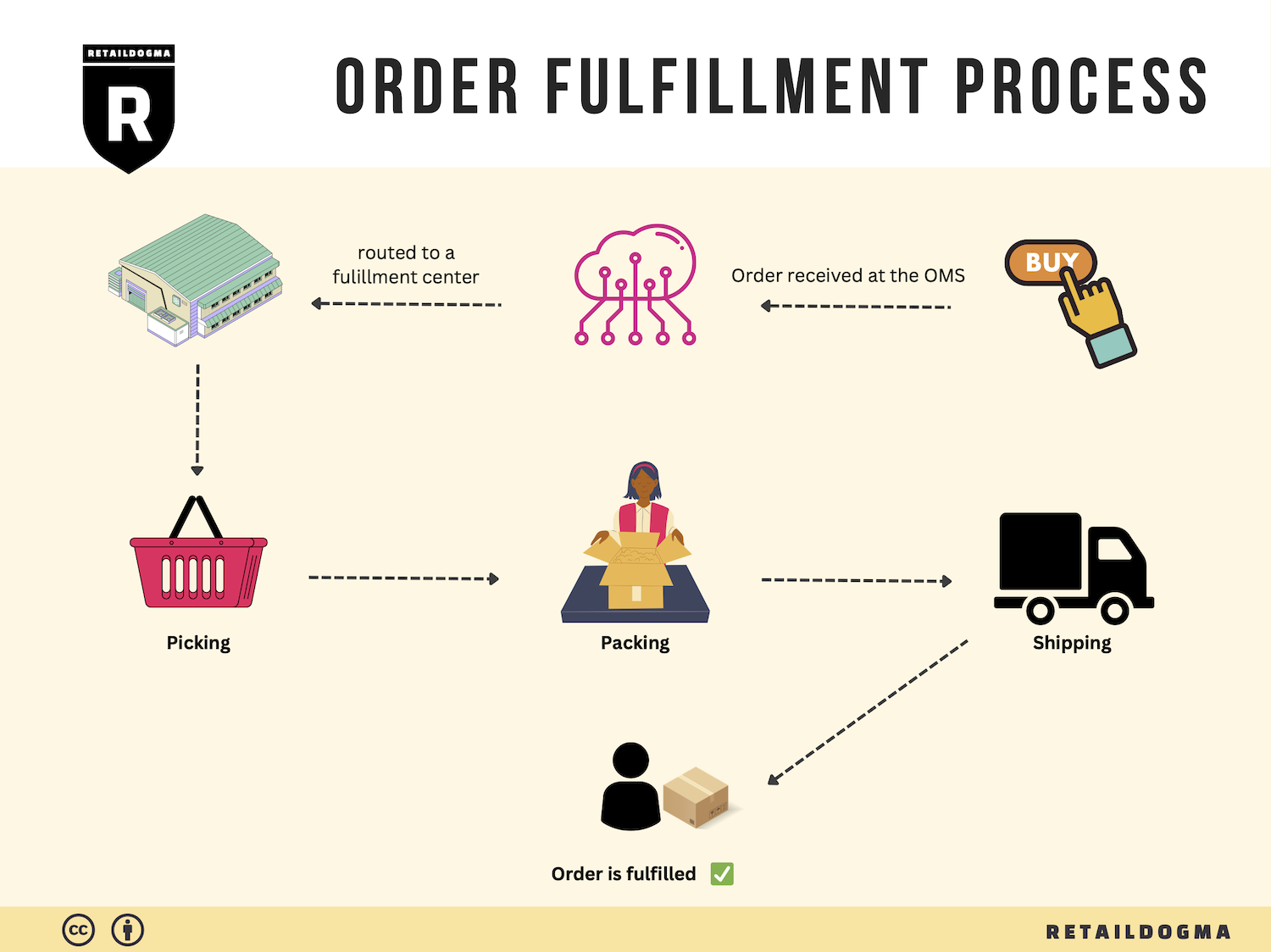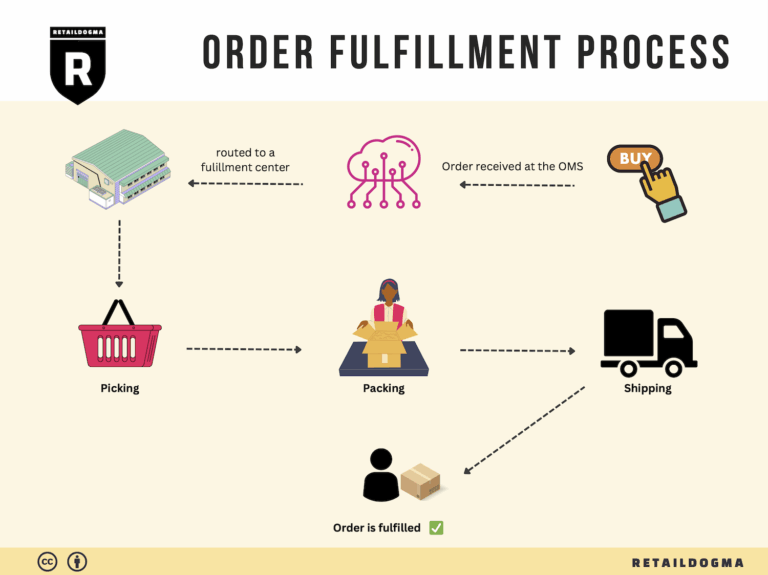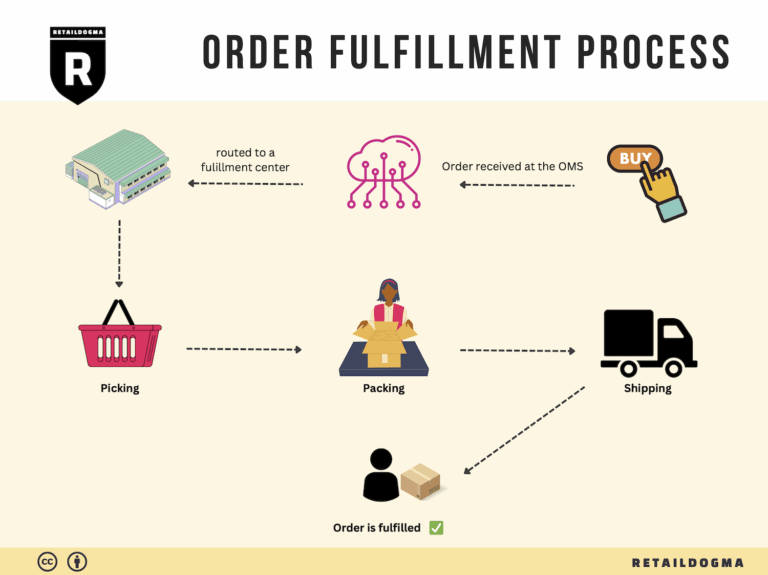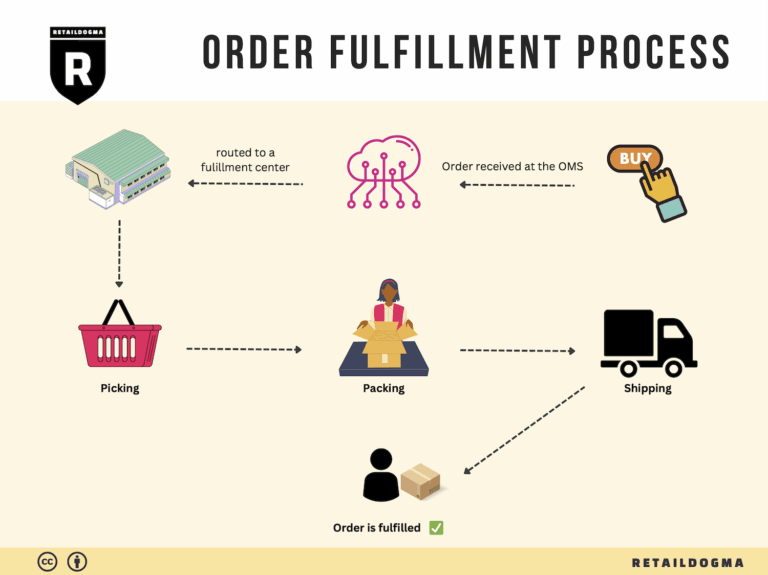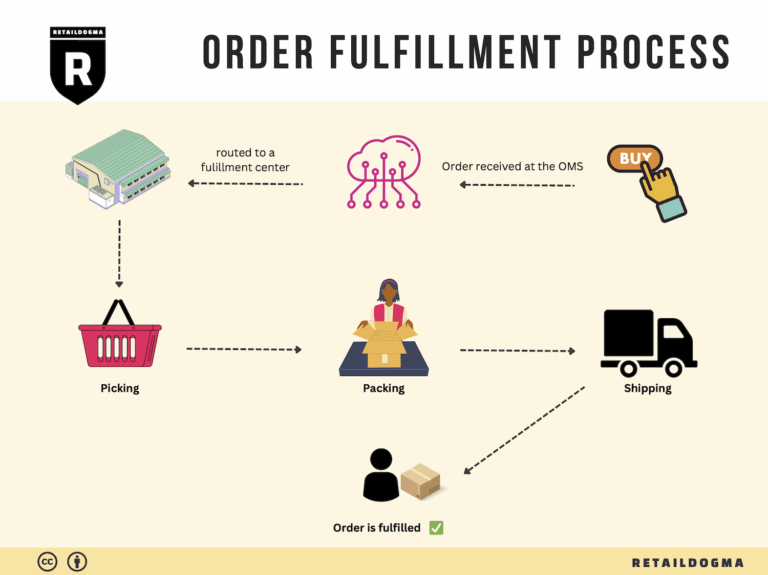What Is A Fulfillment Center? A Complete Guide (2025)
What is E-commerce Fulfillment? An Introduction for Growing Businesses
Understanding the Challenges of E-commerce Fulfillment
As an e-commerce business owner, you may find yourself inundated with the daily demands of packing and shipping orders. The excitement of growing sales can quickly turn into a logistical nightmare, where managing inventory, processing orders, and ensuring timely deliveries feels overwhelming. This is a common challenge faced by many growing online businesses, and it can detract from your primary focus: scaling your brand and serving your customers.
E-commerce fulfillment is the process of getting a product from your warehouse to the customer’s doorstep. It encompasses everything from receiving inventory and storing it in a fulfillment center to picking, packing, and shipping orders efficiently. In today’s competitive marketplace, effective fulfillment strategies are essential for maintaining customer satisfaction and fostering repeat business.
This guide aims to demystify the complexities of e-commerce fulfillment and provide you with the insights needed to streamline your logistics operations. We will explore various fulfillment models, including Third-Party Logistics (3PL) and Fulfillment by Amazon (FBA), to help you understand which might best suit your business needs. Each model has its unique advantages and challenges, and knowing how they align with your operational goals is crucial.
In addition to models, we will delve into the core services provided by fulfillment centers, such as inventory management, order processing, and shipping logistics. Understanding these services will enable you to leverage them effectively, ensuring that your customers receive their orders promptly and in perfect condition.
Choosing the right fulfillment partner can significantly impact your business’s efficiency and growth potential. This guide will provide practical tips on evaluating potential partners, including factors such as service offerings, location, scalability, and pricing. Making an informed decision about your logistics partner is key to ensuring that your fulfillment processes align with your business goals.
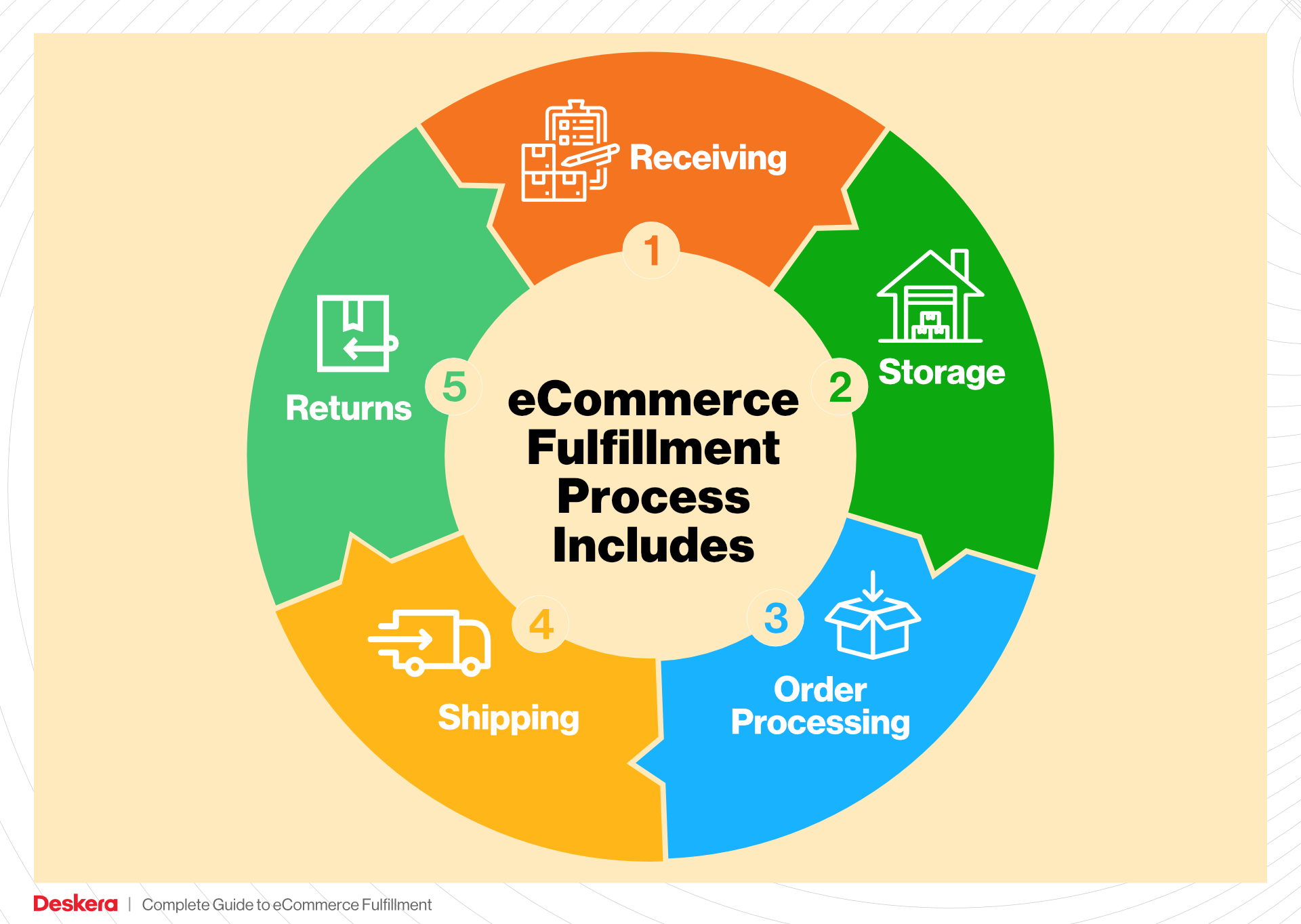
Ultimately, our goal is to empower you, the business owner, to make smart decisions regarding your logistics strategy. By understanding the ins and outs of e-commerce fulfillment, you can focus more on driving sales and expanding your brand while leaving the complexities of logistics to the experts. Let’s dive into the world of e-commerce fulfillment and explore how you can optimize your operations for success.
What You’ll Learn In This Guide
- What is E-commerce Fulfillment? An Introduction for Growing Businesses
- The Order Fulfillment Process: From ‘Buy’ Button to Customer’s Door
- Comparing Fulfillment Models: In-House vs. 3PL vs. Dropshipping
- A Deep Dive into Amazon FBA: Pros, Cons, and Who It’s For
- Core Services Offered by Fulfillment Centers
- How to Choose a Fulfillment Partner: A 6-Point Checklist
- Understanding Fulfillment Pricing: A Breakdown of Common Fees
- Frequently Asked Questions (FAQs) about Fulfillment
- Conclusion: Is Outsourcing Fulfillment the Right Move for Your Business?
- Important Disclaimer
The Order Fulfillment Process: From ‘Buy’ Button to Customer’s Door
1. Receiving Inventory
The order fulfillment process begins with receiving inventory, which is crucial for ensuring that your fulfillment center has the products needed to meet customer demand. During this step, shipments of products arrive at the warehouse, where they are inspected and logged into the inventory management system. This is where Stock Keeping Units (SKUs) come into play—each product is assigned a unique SKU that helps in tracking inventory levels accurately.
Proper receiving processes are vital because they establish the foundation for all subsequent fulfillment activities. If products are not received correctly, it can lead to inaccuracies in stock levels, which can result in overselling or stockouts. By implementing a systematic approach to receiving, businesses can maintain precise inventory counts and ensure that the right products are available when customers place orders.
2. Warehouse Storage
Once inventory is received, the next step is warehouse storage. Products are organized in a way that maximizes space efficiency and facilitates easy access for order picking. This involves categorizing items based on various factors, such as size, weight, and demand frequency. Effective storage solutions often use bin locations—specific spots within the warehouse designated for particular products.
The importance of warehouse storage cannot be overstated. An organized storage system ensures that items can be retrieved quickly, reducing the time spent on order fulfillment. Furthermore, it minimizes the risk of errors during the picking process. By utilizing technology such as warehouse management systems (WMS), businesses can optimize storage layouts and improve overall operational efficiency.
3. Order Picking
The third step is order picking, where items are retrieved from their storage locations to fulfill customer orders. This process typically uses pick lists—documents that specify which items need to be collected for each order. Pick lists can be organized in various ways, such as by SKU, order priority, or warehouse layout, to streamline the picking process.
Efficient order picking is critical for ensuring that customers receive their orders accurately and on time. It directly impacts customer satisfaction and retention. By employing best practices such as batch picking (picking multiple orders at once) or zone picking (assigning pickers to specific areas), fulfillment centers can enhance their picking efficiency and reduce labor costs.
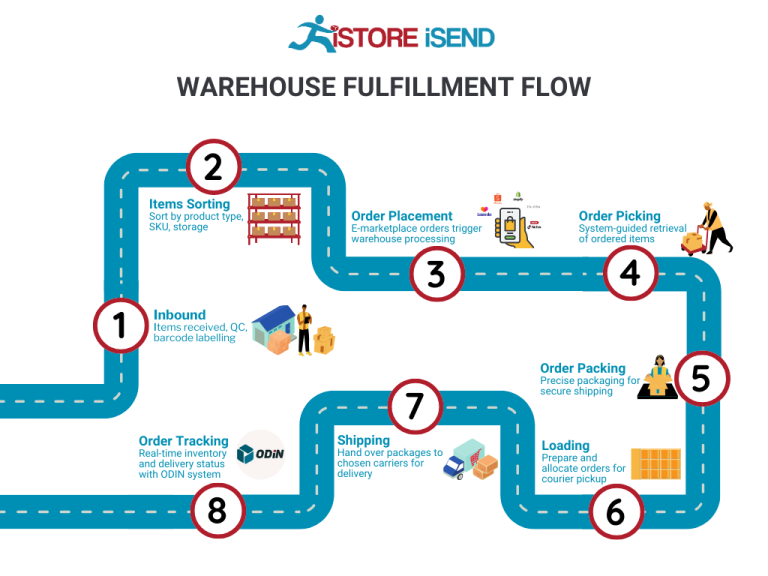
4. Order Packing
After the items are picked, they move to the order packing stage. During this step, products are securely packaged for shipment to customers. This includes selecting appropriate packing materials, such as boxes, bubble wrap, or void fill, to protect the items during transit. The use of packing slips—documents that provide details about the contents of the shipment—is also essential for ensuring accuracy.
Packing is a crucial aspect of the fulfillment process as it directly influences product safety and customer experience. Well-packed orders reduce the likelihood of damage during shipping, which can lead to costly returns and dissatisfied customers. Additionally, thoughtful packing can enhance the unboxing experience, which is increasingly important for brand perception in e-commerce.
5. Shipping & Delivery
The final step in the order fulfillment process is shipping and delivery. Once orders are packed, they are handed over to carriers for transport. This step involves selecting the most appropriate shipping method based on factors such as cost, speed, and destination. Businesses often use shipping software to compare rates and services from different carriers, ensuring they choose the best option for each order.
The shipping and delivery stage is critical because it determines how quickly customers receive their orders, which is a key factor in customer satisfaction. Timely delivery can enhance customer loyalty and encourage repeat purchases. Additionally, effective tracking systems allow customers to monitor their shipments in real-time, further improving their experience.
In conclusion, each step of the order fulfillment process—from receiving inventory to shipping and delivery—plays a vital role in ensuring that e-commerce businesses operate efficiently and meet customer expectations. By optimizing these processes, businesses can scale their operations and enhance their overall logistics performance.
Comparing Fulfillment Models: In-House vs. 3PL vs. Dropshipping
Fulfillment Model Comparison
| Model | Who Handles Inventory | Best For (Business Stage) | Key Advantage | Key Disadvantage |
|---|---|---|---|---|
| In-House Fulfillment | Business Owner | Startups to Medium-Sized Businesses | Complete control over inventory and fulfillment process | High overhead costs and resource-intensive |
| Third-Party Logistics (3PL) | Fulfillment Provider | Growing Businesses | Scalable solutions and reduced overhead | Less control over the fulfillment process |
| Dropshipping | Supplier/Manufacturer | Startups and Small Businesses | Low upfront investment and risk | Longer shipping times and potential quality control issues |
In-House Fulfillment
In-house fulfillment refers to a model where the e-commerce business manages all aspects of inventory and order fulfillment internally. This includes storing products, processing orders, packing, and shipping. This model is often adopted by startups and medium-sized businesses that seek to maintain complete control over their operations. The primary advantage of in-house fulfillment is the level of control it provides. Businesses can closely monitor inventory levels, customize packing, and ensure that quality standards are met at every stage of the process. Additionally, having a dedicated team allows for immediate adjustments based on customer feedback and market demands.
However, this model comes with significant disadvantages. The costs associated with warehousing, staffing, and maintaining logistics can escalate quickly, especially as the business grows. Moreover, managing fulfillment in-house is resource-intensive, requiring significant time and effort that could otherwise be focused on growth strategies, product development, or customer engagement. As demand increases, the limitations of this model become more apparent, leading many businesses to consider outsourcing their logistics needs.
Third-Party Logistics (3PL)
Third-party logistics (3PL) involves partnering with an external provider that specializes in managing inventory, warehousing, and order fulfillment. This model is ideal for growing businesses that want to streamline their operations without the burden of handling logistics themselves. A key advantage of 3PL is scalability; as a business expands, the fulfillment provider can easily adapt to increased order volumes, allowing companies to focus on their core competencies. With advanced technology and processes in place, 3PL providers can optimize shipping routes, manage inventory levels efficiently, and ensure timely deliveries.
On the downside, outsourcing fulfillment means relinquishing some control over the logistics process. Businesses must rely on their 3PL partner to maintain quality standards and handle customer expectations. Additionally, costs can vary based on service levels and the specific needs of the business, which may lead to unexpected expenses. It’s essential for businesses to thoroughly vet potential 3PL partners to ensure they align with their operational needs and customer service standards.
Dropshipping
Dropshipping is a fulfillment model where the retailer does not hold inventory but instead transfers customer orders directly to a supplier or manufacturer, who then ships the products to the customer. This model is particularly appealing for startups and small businesses due to its low upfront investment and minimal risk. Retailers can offer a wide range of products without the need for significant capital tied up in inventory, making it easier to test new products and markets.
While dropshipping presents attractive benefits, it also has notable disadvantages. One major concern is the longer shipping times associated with many dropshipping suppliers, particularly if they are located overseas. Additionally, the retailer has limited control over product quality and fulfillment processes, which can lead to customer dissatisfaction if products do not meet expectations. Furthermore, since many retailers may use the same suppliers, there is a risk of product commoditization, making it challenging to differentiate one’s offerings in a crowded market. Businesses considering dropshipping should carefully select reliable suppliers and maintain clear communication to mitigate these risks.
In summary, each fulfillment model offers unique advantages and challenges that can significantly impact an e-commerce business’s operations and growth trajectory. Selecting the right model depends on a variety of factors, including business size, growth stage, and strategic goals. By understanding these models, e-commerce owners can make informed decisions that align with their operational needs and customer expectations.
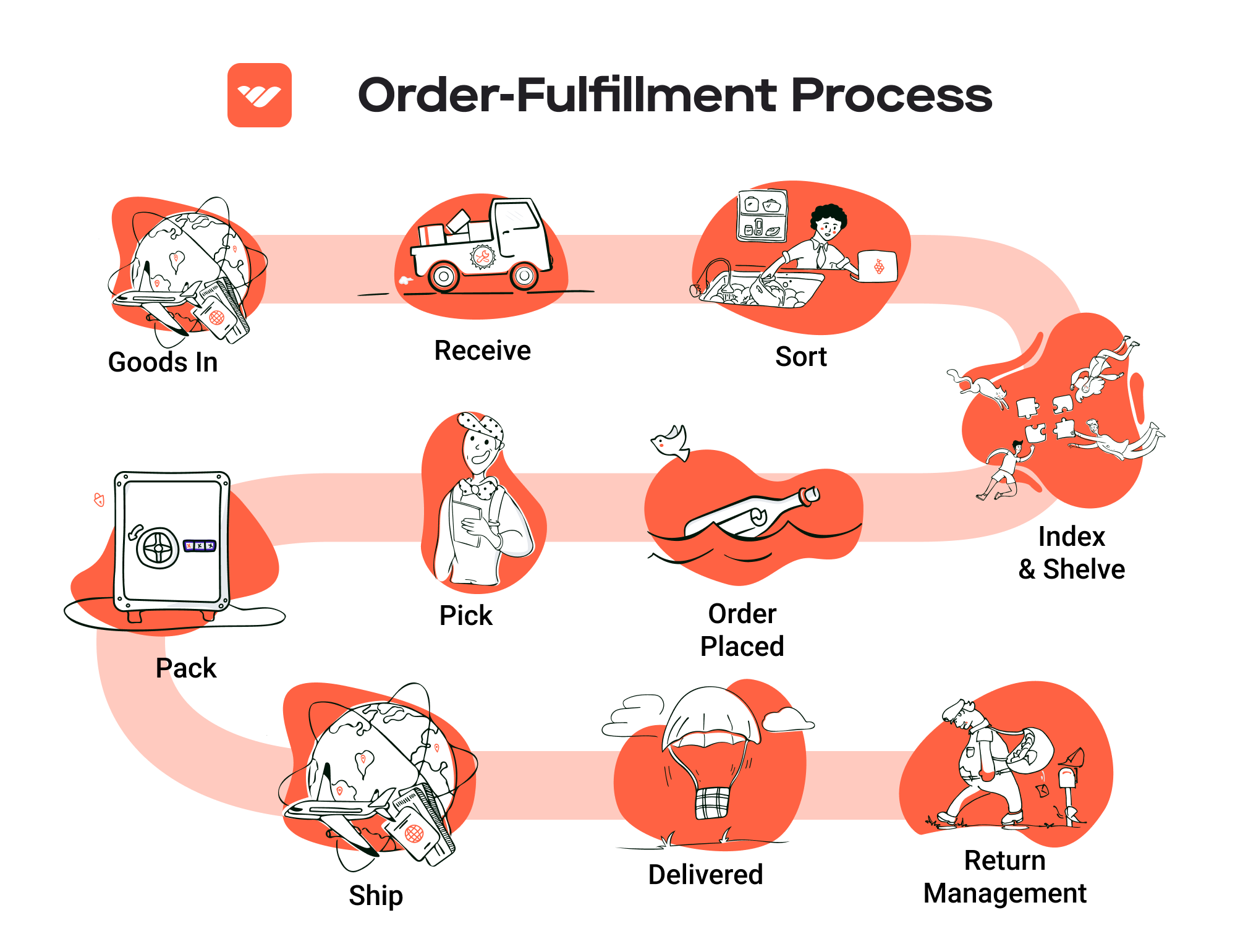
A Deep Dive into Amazon FBA: Pros, Cons, and Who It’s For
Understanding Fulfillment by Amazon (FBA)
Fulfillment by Amazon (FBA) is a service that allows e-commerce sellers to store their products in Amazon’s fulfillment centers. Amazon takes care of storage, packaging, and shipping on behalf of the seller. When a customer places an order, Amazon handles the logistics, including customer service and returns. This service is designed to streamline the order fulfillment process for sellers, enabling them to focus on growing their business without getting bogged down by the complexities of logistics.
How FBA Works
-
Setup: Sellers create an Amazon seller account and register for FBA. They then prepare their products according to Amazon’s guidelines, which includes labeling and packaging requirements.
-
Shipping Inventory: Sellers ship their products to Amazon’s designated fulfillment centers. Depending on the seller’s inventory and the demand for their products, Amazon may direct them to multiple centers to optimize shipping times.
-
Order Processing: When a customer places an order, Amazon picks, packs, and ships the product directly to the customer. Sellers benefit from Amazon’s extensive shipping network, which includes options like same-day and two-day delivery.
-
Customer Service: Amazon manages all customer inquiries and issues related to the order, including returns. This alleviates the burden on sellers and enhances the customer experience.
-
Payment: Sellers receive payments for their sales, minus Amazon’s fees, which vary based on the product type and size.
Pros of FBA
-
Prime Eligibility: Products fulfilled by Amazon are automatically eligible for Amazon Prime, which can significantly boost sales. Prime members are more likely to purchase products that offer fast, free shipping.
-
Customer Trust: Leveraging Amazon’s brand and reputation can build customer trust. Many shoppers prefer buying from sellers that utilize FBA, knowing they will receive reliable shipping and customer support.
-
Multi-Channel Fulfillment: FBA supports sellers who wish to sell on multiple platforms, not just Amazon. They can use FBA to fulfill orders from their own websites or other e-commerce platforms, benefiting from Amazon’s logistics expertise.
-
Scalability: FBA allows sellers to scale their business without needing to invest in warehousing and logistics. Sellers can focus on marketing and product development while Amazon handles fulfillment.
-
Simplified Returns Management: Amazon manages returns efficiently, allowing customers to return items easily, which can improve customer satisfaction and loyalty.
Cons of FBA
-
High Fees: FBA comes with various fees, including storage fees, fulfillment fees, and long-term storage fees. These costs can eat into profit margins, particularly for sellers with low sales volumes or high inventory turnover.
-
Strict Inventory Rules: Amazon has specific inventory policies that sellers must adhere to. Non-compliance can result in additional fees or even suspension of selling privileges. Sellers need to manage their inventory levels carefully to avoid costly penalties.
-
Commingling Risks: FBA uses a commingling inventory model, where products from different sellers may be stored in the same location. This can lead to issues if products are damaged or if there are quality concerns. Sellers may be held responsible for returns or complaints related to items they did not sell.
-
Limited Control: By outsourcing fulfillment to Amazon, sellers give up a degree of control over their order processing and customer service. This can be challenging for brands that prioritize personalized service or unique packaging.
-
Dependency on Amazon: Relying heavily on FBA can make sellers vulnerable to changes in Amazon’s policies, fees, or fulfillment processes. This dependency can pose risks if Amazon alters its business model or service offerings.
Who is FBA Best For?
FBA is particularly well-suited for:
-
Small to Medium-Sized Businesses: Companies looking to scale quickly without the overhead of managing their own logistics and fulfillment operations can benefit greatly from FBA.
-
Brands with High Sales Volume: Sellers who can achieve high sales velocity can absorb FBA fees more easily, thus maximizing their profit margins despite the associated costs.
-
Sellers with a Focus on Customer Experience: Businesses that prioritize providing a seamless shopping experience can leverage FBA’s customer service and return management to enhance customer satisfaction.
-
E-commerce Startups: New sellers looking to establish their presence on Amazon without the complexities of logistics can find FBA an ideal entry point.
-
Businesses Seeking to Expand Reach: Companies that want to tap into Amazon’s vast customer base and logistics network can use FBA as a strategic advantage.
In conclusion, Fulfillment by Amazon offers a robust solution for e-commerce sellers looking to streamline their logistics and enhance their customer experience. However, it’s crucial for businesses to weigh the pros and cons carefully and consider their specific needs and capabilities before committing to FBA.
Core Services Offered by Fulfillment Centers
Inventory Management & Warehousing
Inventory management and warehousing are foundational services provided by fulfillment centers, designed to optimize the storage and tracking of products. Fulfillment centers utilize sophisticated inventory management systems that enable businesses to monitor stock levels in real-time, ensuring that products are available when needed while minimizing excess inventory.
Benefits:
1. Reduced Overhead Costs: By outsourcing warehousing to a fulfillment center, e-commerce businesses can avoid the high costs associated with leasing or maintaining their own storage facilities. This allows companies to allocate resources more effectively toward marketing and growth initiatives.
-
Enhanced Visibility: Advanced inventory tracking systems provide businesses with clear visibility into stock levels, helping prevent stockouts and overstock situations. This transparency supports better decision-making regarding inventory replenishment and order fulfillment.
-
Optimized Storage Solutions: Fulfillment centers often offer flexible storage options, accommodating varying inventory sizes and types. This adaptability is crucial for businesses experiencing seasonal fluctuations or rapid growth.
Pick and Pack Services
Pick and pack services are essential for ensuring that orders are fulfilled accurately and efficiently. This process involves selecting products from the warehouse (picking) and preparing them for shipment (packing) based on customer orders. Fulfillment centers employ trained staff and automated systems to streamline this process.
Benefits:
1. Efficiency in Order Fulfillment: By leveraging trained personnel and technology, fulfillment centers can significantly reduce the time taken to pick and pack orders. This efficiency translates into faster shipping times, enhancing customer satisfaction.
-
Accuracy and Quality Control: Fulfillment centers implement strict quality control measures during the pick and pack process. This includes double-checking items before they are packed, which minimizes errors and ensures that customers receive the correct products.
-
Scalability: As e-commerce businesses grow, their order volumes may fluctuate. Fulfillment centers can easily scale their pick and pack services to accommodate increased demand during peak seasons or promotional campaigns, allowing businesses to manage growth without the need for additional in-house resources.
Kitting and Assembly
Kitting and assembly services involve bundling multiple products into a single package or preparing items for sale by assembling them into a finished product. This service is particularly beneficial for companies that sell products requiring customization or that are frequently sold together.
Benefits:
1. Improved Customer Experience: Offering kitted products can enhance the shopping experience by providing customers with a convenient solution that meets their needs. For example, a company selling gift baskets can have these items pre-assembled and ready for shipment.
-
Efficient Product Launches: For businesses introducing new products or limited-time offers, kitting services allow for quick assembly and packaging. This agility can be crucial in capturing market interest and driving sales.
-
Cost Savings: By utilizing kitting and assembly services, businesses can reduce the time and labor costs associated with packaging individual items. Fulfillment centers can streamline this process, leading to improved operational efficiency and lower overall costs.
Returns Management (Reverse Logistics)
Returns management, often referred to as reverse logistics, is a critical service offered by fulfillment centers. This process encompasses handling customer returns, restocking products, and managing any necessary repairs or refurbishments. Efficient returns management is vital for maintaining customer satisfaction and loyalty.
Benefits:
1. Streamlined Returns Process: Fulfillment centers provide a structured approach to managing returns, ensuring that items are processed quickly and accurately. This efficiency helps minimize disruptions to inventory levels and allows businesses to promptly restock sellable items.
-
Enhanced Customer Satisfaction: A hassle-free returns process can significantly impact customer loyalty. Fulfillment centers often offer user-friendly return policies and systems, making it easy for customers to send back products, which in turn enhances their overall shopping experience.
-
Data Insights for Improvement: Returns management services provide valuable insights into product performance and customer preferences. Analyzing return reasons can help e-commerce businesses identify areas for improvement, whether in product quality, descriptions, or customer service, ultimately leading to better offerings in the future.
By partnering with a fulfillment center that offers these core services, e-commerce businesses can streamline their operations, reduce costs, and enhance customer satisfaction, all of which are critical for scaling successfully in a competitive market.
How to Choose a Fulfillment Partner: A 6-Point Checklist
Location & Warehouse Network
Importance:
The geographical location of your fulfillment partner’s warehouses can significantly impact shipping times and costs. Selecting a partner with strategically located warehouses ensures that your products can reach your customers quickly and efficiently, minimizing delays and enhancing customer satisfaction.
Questions to Ask:
1. How many fulfillment centers do you operate, and where are they located?
2. How do your locations affect shipping times to my primary customer bases?
3. Can you provide insights into your shipping capabilities and the average delivery times for different regions?
Technology & Integrations
Importance:
In today’s fast-paced e-commerce environment, technology plays a critical role in streamlining operations. A fulfillment partner that offers robust technology and seamless integrations with your existing systems can enhance order processing accuracy, inventory management, and real-time tracking.
Questions to Ask:
1. What technology platforms do you use for order management and inventory tracking?
2. Can your system integrate with my current e-commerce platform (e.g., Shopify, WooCommerce)?
3. Do you provide real-time tracking for orders, and how accessible is this information for my team and my customers?
Specializations (e.g., Cold Storage, Oversized Items)
Importance:
Different businesses have varying needs based on the nature of their products. If your business involves specialized items—such as perishable goods requiring cold storage or oversized items needing unique handling—it’s crucial to partner with a fulfillment center experienced in these areas.
Questions to Ask:
1. Do you have specific facilities or capabilities for handling specialized products?
2. What measures do you have in place for quality control, especially for sensitive items?
3. Can you provide examples of how you’ve managed similar products for other clients?
Scalability & Capacity
Importance:
As your business grows, your fulfillment needs will evolve. A suitable partner should have the capacity to scale operations up or down, accommodating seasonal spikes or long-term growth without compromising service quality.
Questions to Ask:
1. How do you handle increased order volumes during peak seasons?
2. What is your capacity for storage and order processing, and how can you adapt to my business’s growth?
3. Can you provide examples of how you’ve successfully scaled operations for other clients?
Pricing and Contracts
Importance:
Understanding the pricing structure and contractual obligations is essential to avoid unexpected costs and ensure that the partnership aligns with your budget. Transparent pricing models can help you maintain profitability while leveraging fulfillment services.
Questions to Ask:
1. What is your pricing model (e.g., per order, per item, monthly fees)?
2. Are there any additional fees I should be aware of (e.g., storage fees, handling fees)?
3. What are the terms of your contract, and is there flexibility for renegotiation if my business needs change?
Customer Support & Reviews
Importance:
Exceptional customer support can be a game-changer in resolving issues quickly and maintaining smooth operations. Additionally, reviews and testimonials from other clients provide valuable insights into the fulfillment partner’s reliability and performance.
Questions to Ask:
1. What customer support options do you offer (e.g., phone, email, live chat)?
2. How quickly can I expect responses to inquiries or issues?
3. Can you provide references or case studies from businesses similar to mine to gauge your performance and reliability?
Conclusion
Choosing the right fulfillment partner is a strategic decision that can significantly influence your e-commerce success. By carefully evaluating potential partners based on this checklist, you can ensure that you select a fulfillment center that meets your unique needs and supports your growth ambitions. Taking the time to ask the right questions and understand their capabilities will empower you to make an informed decision that enhances your logistics operations and ultimately delights your customers.
Understanding Fulfillment Pricing: A Breakdown of Common Fees
Initial Setup Fees
Initial setup fees are typically charged when you first partner with a fulfillment center. This one-time fee covers the costs associated with onboarding your business into their system. The setup process may include creating your account, integrating your eCommerce platform with their warehouse management system, and establishing inventory tracking procedures.
The calculation of initial setup fees can vary significantly based on the fulfillment center’s complexity of operations and the specific services you require. For instance, if your business has specialized inventory or requires unique packaging solutions, the setup process could involve additional time and resources, leading to higher fees. It’s essential to clarify what services are included in the setup fee to avoid unexpected costs.
Receiving Fees
Receiving fees are charged for the process of accepting and processing your inventory upon arrival at the fulfillment center. This fee typically includes unloading the shipment, checking the inventory against the purchase order, and storing the items in the warehouse.
Receiving fees can be calculated on a per-receipt basis, meaning you’ll pay a fee each time a shipment arrives, or based on the volume of goods received (e.g., per pallet or item). If you ship large quantities of inventory frequently, these fees can add up, so it’s advisable to inquire about any bulk receiving discounts that may be available.
Storage Fees (per pallet/bin)
Storage fees are charged for the space your inventory occupies within the fulfillment center. These fees can vary based on the size of the storage unit, whether it’s a pallet, bin, or shelf space.
Typically, storage fees are calculated on a monthly basis and can range from a flat rate per pallet to a per-bin charge. Some fulfillment centers may offer tiered pricing based on the volume of inventory stored. For example, businesses that store more than a certain number of pallets may qualify for lower per-pallet rates. It’s essential to monitor your inventory levels to optimize storage costs effectively.
Pick & Pack Fees (per item/order)
Pick and pack fees are charged for the process of selecting items from inventory and preparing them for shipment. This fee usually covers picking the ordered items, packing them into boxes or envelopes, and labeling them for shipment.
Pick and pack fees can be structured in various ways, such as per item or per order. For instance, a fulfillment center might charge a set fee for picking and packing each item, or they may offer a flat rate for orders containing multiple items. Businesses should evaluate their typical order size and frequency to estimate these costs accurately. Additionally, it’s beneficial to discuss any potential discounts for larger orders or long-term contracts.
Shipping Fees
Shipping fees are incurred when the fulfillment center ships orders to customers. These fees can encompass various costs, including carrier charges, packaging materials, and any additional services such as expedited shipping.
Shipping fees are typically calculated based on the destination, weight, and dimensions of the package. Many fulfillment centers partner with multiple carriers to provide competitive rates, which can help reduce overall shipping costs. Businesses should inquire about the fulfillment center’s shipping options and any volume discounts available, especially if they anticipate high shipping volumes.
Tips for Getting an Accurate Quote
To obtain an accurate quote from a fulfillment center, consider the following tips:
-
Provide Detailed Information: When requesting a quote, be specific about your business needs, including the type of products you sell, expected order volumes, and any special handling requirements.
-
Ask About All Fees: Ensure that you inquire about all potential fees, including those that may not be immediately apparent, such as return processing fees or seasonal storage costs.
-
Compare Multiple Quotes: Gather quotes from several fulfillment centers to compare pricing structures and services offered. This comparison can help you identify the best fit for your business.
-
Discuss Scalability: As your business grows, your fulfillment needs may change. Discuss how the fulfillment center can accommodate your growth and any potential changes in pricing.
-
Request a Trial Period: If possible, negotiate a trial period to assess the fulfillment center’s services and pricing before committing to a long-term contract. This can help ensure that their services align with your business needs.
By understanding these common fulfillment pricing models and following these tips, e-commerce business owners can make informed decisions that align with their operational goals and budget constraints.
Frequently Asked Questions (FAQs) about Fulfillment
1. What is a fulfillment center?
A fulfillment center is a third-party logistics (3PL) provider that handles the storage, processing, and shipping of products on behalf of e-commerce businesses. They manage the entire order fulfillment process, from receiving inventory to picking, packing, and delivering orders to customers.
2. What is the difference between a warehouse and a fulfillment center?
While both warehouses and fulfillment centers store products, their functions differ significantly. A warehouse primarily focuses on storage, often for long-term inventory holding. In contrast, a fulfillment center is designed for fast order processing and shipping, handling the entire logistics chain to ensure timely delivery to customers.
3. What services do fulfillment centers in the USA typically offer?
Fulfillment centers in the USA provide a range of services, including inventory storage, order processing, picking and packing, shipping, returns management, and real-time inventory tracking. They may also offer additional services such as custom packaging and quality control checks to ensure product integrity.
4. How much do fulfillment services cost?
Fulfillment service costs can vary based on several factors, including the volume of orders, the types of services required, and the size and weight of the products. Generally, costs may include storage fees, picking and packing fees, shipping costs, and additional services. Businesses should request quotes from multiple providers to compare pricing structures.
5. How do I choose the right fulfillment center for my business?
When selecting a fulfillment center, consider factors such as the range of services offered, location, scalability, technology integration, and customer support. It’s essential to evaluate your specific business needs and ensure the provider can accommodate your logistics requirements as your business grows.
6. What is a 3PL?
A 3PL, or third-party logistics provider, is a company that offers outsourced logistics services, including transportation, warehousing, and fulfillment. They help businesses manage their supply chain operations more efficiently, allowing companies to focus on core business activities while leveraging the expertise of logistics professionals.
7. How can fulfillment centers improve my business’s efficiency?
Fulfillment centers streamline logistics by handling order processing, inventory management, and shipping. By outsourcing these tasks, businesses can reduce operational burdens, minimize errors, and improve delivery times. This efficiency allows companies to focus on growth, marketing, and customer service.
8. Can fulfillment centers help with international shipping?
Yes, many fulfillment centers offer international shipping solutions. They can manage customs documentation, tariffs, and international logistics to ensure your products reach customers around the world. It’s essential to discuss your international shipping needs with potential fulfillment partners to ensure they can meet your requirements.
9. What types of businesses typically use fulfillment centers?
Fulfillment centers cater to a wide range of businesses, including e-commerce retailers, subscription box services, electronics manufacturers, clothing brands, and more. Any business that requires efficient order processing and shipping can benefit from partnering with a fulfillment center.
10. How does inventory management work in a fulfillment center?
Inventory management in a fulfillment center involves tracking stock levels, managing product check-ins and check-outs, and providing restock notifications. Advanced inventory management systems ensure that products are stored correctly and are available for quick order fulfillment. This level of oversight helps businesses maintain optimal inventory levels and reduce stockouts or excess inventory.
Conclusion: Is Outsourcing Fulfillment the Right Move for Your Business?
The Case for Outsourcing Fulfillment
As e-commerce continues to evolve, the complexities of logistics can quickly become overwhelming for business owners. Outsourcing fulfillment to a third-party logistics (3PL) provider presents a powerful solution that can streamline operations, enhance efficiency, and ultimately contribute to your bottom line.
One of the most significant advantages of partnering with a fulfillment center is time savings. By outsourcing order processing, inventory management, and shipping, you free up valuable resources that can be redirected towards strategic initiatives such as marketing, product development, and customer engagement. This allows you to focus on scaling your business rather than getting bogged down in the operational details.
Scalability is another crucial benefit. As your e-commerce business grows, so too do your logistics needs. A reputable fulfillment partner can easily adjust to changes in order volume, whether you’re experiencing seasonal spikes or consistent growth. This flexibility ensures that you can meet customer demands without the hassle of managing a fluctuating in-house operation.
Moreover, leveraging the expertise of a fulfillment service can provide a significant competitive edge. Fulfillment centers are equipped with advanced technology and experienced staff, ensuring that your logistics are managed with precision and efficiency. Their established processes often lead to faster shipping times and improved customer satisfaction—two critical factors in today’s market.
However, not all fulfillment partners are created equal. It’s imperative to select a provider that aligns with your business goals and can adapt to your specific needs. Take the time to research potential partners, focusing on their service offerings, scalability options, and industry reputation.
As a strategic next step, conduct an audit of your current shipping and fulfillment processes. Assess whether the complexities you face could be alleviated by a dedicated fulfillment partner. The right choice can be a game-changer, positioning your business for sustainable growth and success in the competitive e-commerce landscape.
Important Disclaimer
⚠️ Important Disclaimer
The information in this guide is for educational purposes. Fulfillment services, pricing, and platform features change frequently. Always conduct your own due diligence and consult with providers directly before making business decisions.
